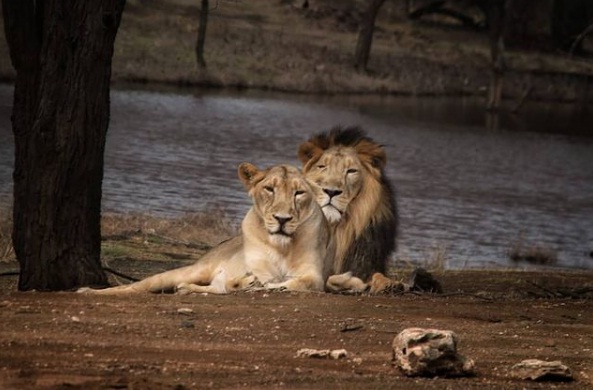Diu
History :
The documented history of the District of Diu begins with the Maurya rule. Emperor Chandragupta Maurya had extended his mastery over Saurashtra and had appointed Pushagupta as Governor of the province of Saurashtra with the Head-quarters in village Girnar close to Junagadh. Yavanraj Tushappa dominated over Saurashtra as Governer of Emperor Ashoka Emperor Ashoka had sent Yavana Thero named Dhammarakhito as evangelist to the western ocean board together with Diu. His grandchild Samprati appears to own ruled over Saurashtra from Ujjain. He propagated religionism and erected several Jain Temples. The Jain traditions from Diu seems to belong to the current period.
The District looks to be underneath the rule of Indo-Greek kings Eukratides, Meanandar and Appollodotes II of 1st} Century B.C. to concerning A.D. 50. throughout 1st Century, the district seems to own been dominated by Kshaharatas who had established their rule over western a part of India as well as Saurashtra. For quite following thousand years, Diu fashioned part of the kingdoms of dynasties that ruled over the western India including Gujarat. The last king of the Vaja phratry ruler of Somnath Patan ruled over Diu within the first decade of the fifteenth century. Thereafter, Diu came underneath the management of the Muslims Sultans of Gujarat who seen to own dominated Diu for following one and a centuries.
Early in 1535, the Portuguese Governor First State Cunha had junction rectifier his expedition for the capture of the city in Diu, however was defeated by the ruler. However, around that period, the Gujarat Sultan Bahadur crowned head' kingdom was inundated by Mughal invasion. ironed by Mughal king Humayun on one facet and therefore the Portuguese at the gates of Diu, Bahadur Shah entered into a pact with Nuno First State Cunha on October 25, 1535 who united to help Bahadur Shah against his enemy by land and sea. successively he received permission to construct a fort at Diu and a website was granted for this purpose within the harbour. when the Mughal danger was receded, the crowned head of Gujarat accomplished his mistake in permitting the Portuguese to construct the fort. Finally Diu was conquered by the Portuguese in 1546 who dominated there until 1961.
Liberated on nineteenth December, 1961 from Portuguese; became a locality of the U.T. of state, Daman and Diu underneath Government of India. when Statehood of Goa on thirtieth May, 1987, Daman and Diu became a separate U.T.
.
Culture :
The territories of Daman associated Diu were beneath Portuguese regime from 1546 to 1961.
Diu is an extension of Kathiawad Cultural Zone that influences language, dress, patterns, food habits, customs and follow and alternative culture elements. The ethnic mosaic of Daman and Diu includes of Hindus, namely the Kharwa, Koli Patel, Koli, Bhraman, Bania, Vanja, Salat, Sanghadia, Sager, Baria, Kamli, Mitna, Mangela, Bhandari, Macchi, Kumbhar, Mahyavanshi, the tribals, namely the Dhobia, Dubla and Siddi; The Muslim viz. Momin and Khoja descendants of Rajputs which concerning the ATAK (Surname) GOTRA (clan) names. whereas the Kharwa, Koli, Koli Patel, Vanja, Mangela, Bhandari, Sager and salaat claim to be the first inhabitants of Union Territory, alternative understand them as migrants from varied places of Gujarat and Saurashtra.
20 Best Places To Visit In Diu
Do not miss out on these most-suggested places to visit in Diu during your sightseeing trip or you will have a major FOMO. Each place you’ll visit in Diu are going to make your whole travel experience worthwhile as well as memorable. Put these awesome places to explore in Diu on your itinerary right away so that you are not stuck in a last minute research while compiling your trip plan.
(1). Naida Caves – Explore The Rock Formations
(2). Diu Fort – Must-Visit Place
(3). Nagoa Beach – Laze Around
(4). Gangeshwar Mahadev Temple – Seek Blessings
(5). Ghoghla Beach – Soak In Sun Warmth
(6). Zampa Gateway – Monument Of National Importance
(7). INS Khukri Memorial – Plunge Into The History
(8). Sunset Point – Witness The Changing Hues Of Sky
(9). St. Paul Church – Largest Church In Diu
(10). Sea Shell Museum – See Colorful Seashells
(11). Dinosaur Park – Fun Place For Kids
(12). Simbor Beach – Watch The Waves Clashing
(13). Chakratirth Beach – A Secluded Place
(14). Jallandhar Beach – Go For Water Sports
(15). Gomtimata Beach – Spend Some ‘Me-Time’
(16). Church Of St. Francis Of Assisi – Pay A Visit
(17). Diu Museum – A Restored Church
(18). Hoka Trees – Spend Some Time With Nature
(19). Panikota Fort – The Jail Of Diu
(20). Chapel Of Our Lady Rosary – Admire The Architecture
Locotion :
Diu is island settled slightly off the coast of Kathiawad close to the Port of Veraval in Gujarat with a coastal length of twenty one kms. and is at a distance of regarding 768 kms. from Daman, the Capital of the fresh fashioned Union Territory of Daman and Diu.
Diu is delimited by Gir-Somnath and Amreli District of Gujarat within the North and by the Arabian Sea from 3 sides. it's connected to the solid ground via 2 bridges.
The district of Diu is situated between the parallels 20°-44'-34” and 20°-42'-00” of latitude north and between the meridians 71°-00'-24” and 70°-52'-26" of meridian east of Greenwich. Its length from the extremes north and south, measures 4.6 kms and dimension from east to west measures 13.8 kms. The altitude is vi meters higher than ocean level. The topography is mostly plain. The hillocks attain most height of thirty metres.
The closest railroad terminal is Delwada at the space of nine kms. from Diu. however vital trains are connected with Veraval that is ninety kms. from Diu. some of Diu District is on main land which is called as Ghoghla. alittle a part of Diu known as Simbor is settled in Gujarat at a distance of twenty five kms. from Diu.





0 Comments